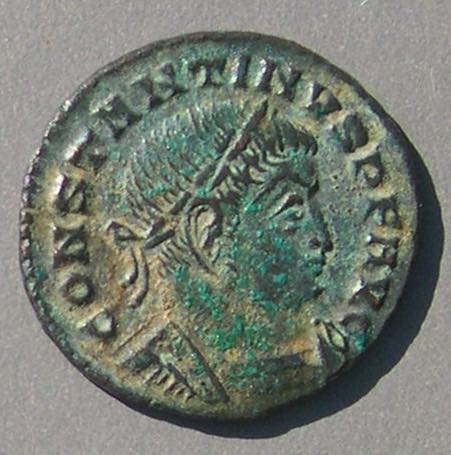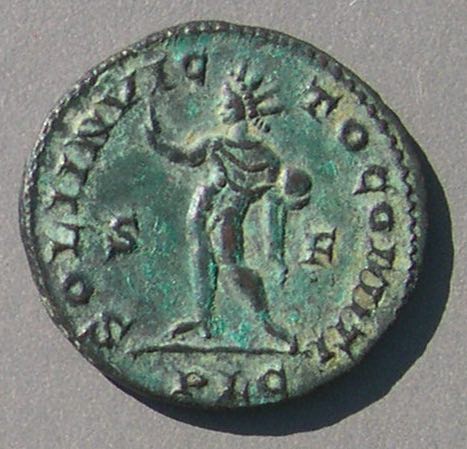Constantine the Great, Roman emperor 307 - 337 AD.

This is a very common copper coin of the Roman emperor Constantine the Great who ruled 307 to 337 AD. This coin is 23 millimeters in diameter (almost an inch, like a quarter). It says his name and three titles on the obverse reading clockwise (the legend begins at 8:00):
CONSTANTINVS P F AVG
(The spaces between words do not usually appear on Roman coins.) Roman names usually end in "VS" which is the Roman way of writing "us" (as in the names Marcus and Lucius). We call him "Constantine," they called him "Constantinus".
In the legend, "P F" abbreviates "Pius", which means "pious" or "dutiful", and "Felix," which means "happy". Finally, "AVG" abbreviates "Augustus", which is the Roman title for "emperor". Again, the "V" shape serves as the modern letter "u".

The reverse depicts a standing figure of Sol, the sun god, naked but for a cloak, raising his right hand in blessing and holding a globe in his left hand. Constantine invoked the support of the sun god before he converted to Christianity. Can you make out the letters in the reverse legend? It is
SOLI INVICTO COMITI
around (beginning at 7:00), with PLG below, and S and F in the fields to the left and right of Sol. The legend translates to "Sol, invincible comrade (of Constantine)." The "PLG" mark is a mint mark of Lugdunum, now the modern Lyons in southern France. No one knows for sure what the extra symbols S and F in the field mean (some people hypothesize they mean "S(aeculi) F(elicitas)", that is, "Happy Times"). In any case, the letters S and F distinguish this issue of coins from other similar issues.
Return to page 1 of Ancient Roman and Greek Coins.
Read more about legends.

